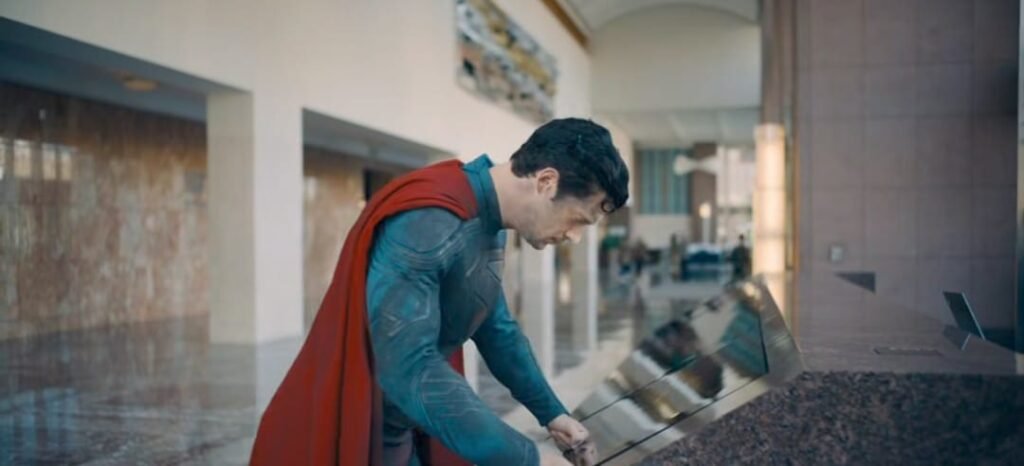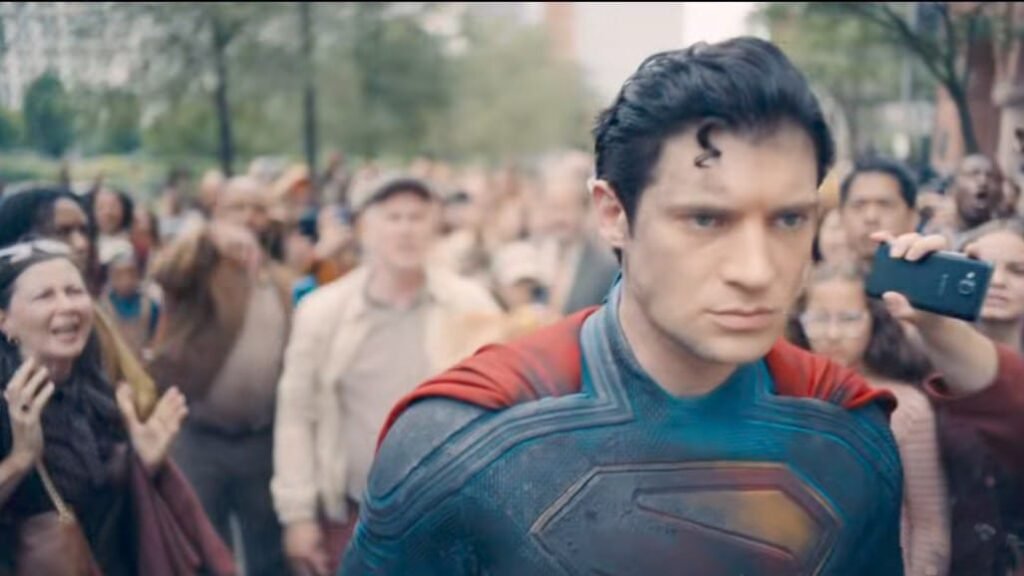The Superman ending explained! Explore how the shocking post-credit scenes set up future heroes, villains, and major DC Universe crossovers.
The newest ‘Superman’ provides some cool shock and awe with the fandom and industry on Saturday, shocking expectations. James Gunn’s image for the DCU is on the verge of hitting the theatres, and it is obvious this rebooted ‘Superman’ is not just another standalone film, but instead the launching point for a broad new path. The emotion and sentiment of the ending and surprise post-credit scenes provide closure, but at the same time interlace a network of interconnected stories that could be the beginning of something much larger.
Superman (2025) – A New Era
James Gunn’s ‘Superman’ is not a retread of previous concepts. Instead, it is a new, emotionally-based take on the Man of Steel – one that makes a hopeful union of power, vulnerability, and legacy. David Corenswet provides a charismatic yet human-like portrayal of Clark Kent struggling with his identity as an alien-empowered human. This version of Superman feels more relatable, more torn, and more grounded than previous versions of the character.The base story follows Clark Kent as he struggles with his dual nature in a world that is intentionally wary of unchecked power. Metropolis is not the shining city of the golden age – it is a fast-paced metropolis with political stunts, training dangers, economic divide, and the anxieties of the unknown.
What Actually Happened?

The film transitions to the climax of the battle between Superman and Braniac, a villain that had been teased throughout the film via encrypted signals and distortion of planetary data. This is not merely an alien invasion movie; it is a conflict between philosophies. Braniac sees Earth as chaotic and wants a world of order that he envisions can only come from logic and control.
The last act is one of the most visually exciting superhero cinema battles – it is not merely a strength challenge; it is a challenge of ideals. Superman competes against not only impossible odds but humanity itself: he chooses every time to rescue even those who doubt him, a government faction led by Amanda Waller (played by Viola Davis) who once plotted to contain him.
A twist? Superman doesn’t kill Braniac, instead, Superman defeats Braniac, by using his Kryptonian knowledge stored at the Fortress of Solitude, an example of his mercy, compassion, and moral strength — loyalty to his ideals in the face of extinction.
This choice of heroism shows the reader Superman’s character as it pertained to modern heroes as well as repeated a key theme that power without compassion is tyranny.
What the Ending Really Means
The last scene opens and closes with an emotional nuance. Clark Kent returns to Smallville and a brief quiet moment with Martha Kent before the credits roll reminding us that regardless of how powerful he is, his heart will always be on Earth.
This exciting declaration heralds the arrival of a new Superman who will not hide, who will not be coach-potatoed by fear, and who will be a representative of balanced power in a world that is fractured.
First Post-Credit Scene: Lex Luthor Returns
The first post-credit scene serves as a direct lead up to future conflict — and the most talked about moment with fans, to be fair.
This scene solidifies Lex Luthor as the primary antagonist in the next phase of the DCU, most likely setting up a Lex vs Superman arc that focuses on ideologies, control, and humanity’s fear of the unknown.
Lex is no longer a cartoony villain — Gunn’s take seems to lean much more grounded, much more manipulative, and ultimately scarier in his ability to manipulate public perception and political power.
Second Post-Credit Scene: The Lantern Connection
The second post-credit scene completely shifts the tone and further opens up the universe.
A green streak flashes across the sky. It cuts to a desolate landscape. We see a figure kneeling, battered and bruised — it’s Hal Jordan, aka the Green Lantern (rumored to be played by Glen Powell).
Third Post-Credit Scene (Yes, There’s One More):
The Multiverse Tease Going full Marvel with its approach to storytelling – with a DC twist, the last post-credit scene teases the Multiverse.
We see Flash (played by a new actor) observing some temporal rifts. A portal flashes open revealing a somewhat blurry image of Batman – not Pattinson and not Affleck – another face shrouded in darkness.
Theories Already Taking Over the Internet
Here are some of the most discussed fan theories on what was just talked about along with the post-credit scenes:
Braniac isn’t gone. He uploaded part of his consciousness to the satellites on Earth (possibly for the creation of Cyborg or even setting up Metallo for the future).
Lex is working with Amanda Waller. Many speculate Waller’s small fun of saying the name “Project Cadmos” is hinting at additional bio-engineering intentions with Kryptonian DNA.
The Green Lantern is sending out a distress signal to the Justice League. Many rumors speculate the team will organically come together during Phase 2 of Gunn’s DCU instead of being hurried to come together.
The Batman shown in the portal could be Jason Isaacs or Jensen Ackles. Whether or not true, both actors have gained great momentum among fans calling for a darker, detective-style Batman.
Implications of This Film for James Gunn’s DC Universe
Now we can state this: this film is the start of the DCU, the themes of legacy, morality, and interconnectedness are through the roof! While Marvel focuses on witty banter and multiverse drama, Gunn’s DCU is feeding off of mythology and moral choices.
What is smart is that Gunn is not rushing to put teams together. He is planting some seeds: Superman, Lanterns, Lex, timelines – this all seems to point to a DC Crisis event, but slowly enough that everyone can develop their character.
Why This Superman Is Important
This Superman film is not just a reboot of a property, but an evolution of what a superhero film can do. It respects certain mythos, modernizes the politics, and has long-form storytelling that feels earned, not forced.
With emotional storytelling, post-credit surprises, and a real roadmap that is coherent, DC is finally at a place where it does not feel like it is trying to be Marvel, which is a good thing.
FAQs
1. Who’s the main villain in the new Superman film (2025)?
The main villain is Brainiac, an alien who is unbelievably intelligent; he wants to bring order to Earth using force. Brainiac makes an appearance, which brings cosmic threats into the DCU, as well as growth for Superman, both on a moral level and an intellectual level.
2. Is Lex Luthor in Superman 2025?
Yes. Lex Luthor makes an appearance in a post-credit scene played by Nicholas Hoult. His appearance gives the indication that he’ll be appearing more in future chapters of DCU arc storylines, possibly as an antagonist working behind the scenes.
3. How many post-credit scenes are in the Superman (2025) film?
There are three post-credit scenes:
Lex Luthor and Project Omega;
Green Lantern signals distress, and
Tease of a multiverse, a new version of Batman.
4. What does the ending of Superman (2025) mean?
The ending shows Superman, instead of destroying, choosing peace, compassion, and moral fortitude. It establishes him as a guardian of Earth and leads into a positive future for the DC Universe.
5. Is this Superman connected to the previous DC movies?
To clarify, James Gunn’s Superman (2025) is considered a soft reboot, with zero tied directly to earlier versions, such as Zack Snyder’s or the DCEU. However, there are multiverse teases which suggest legacy characters will return in the future.
